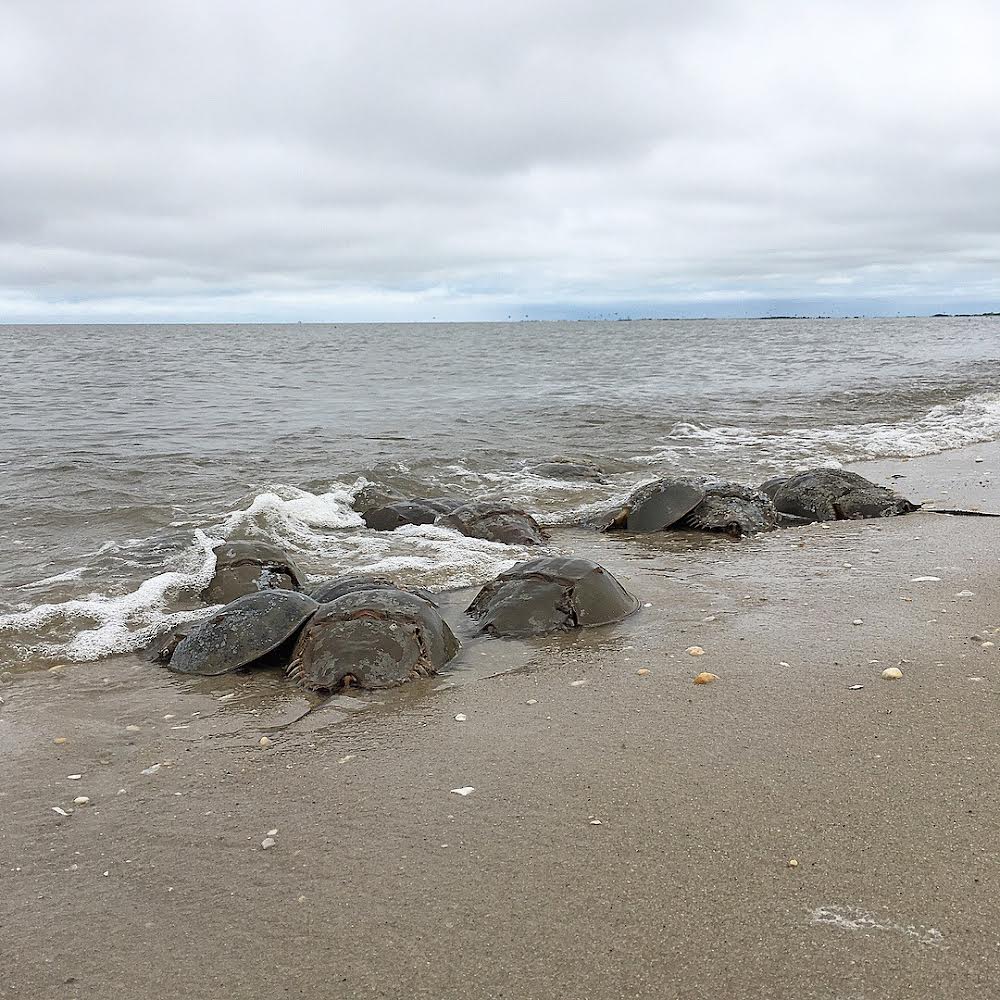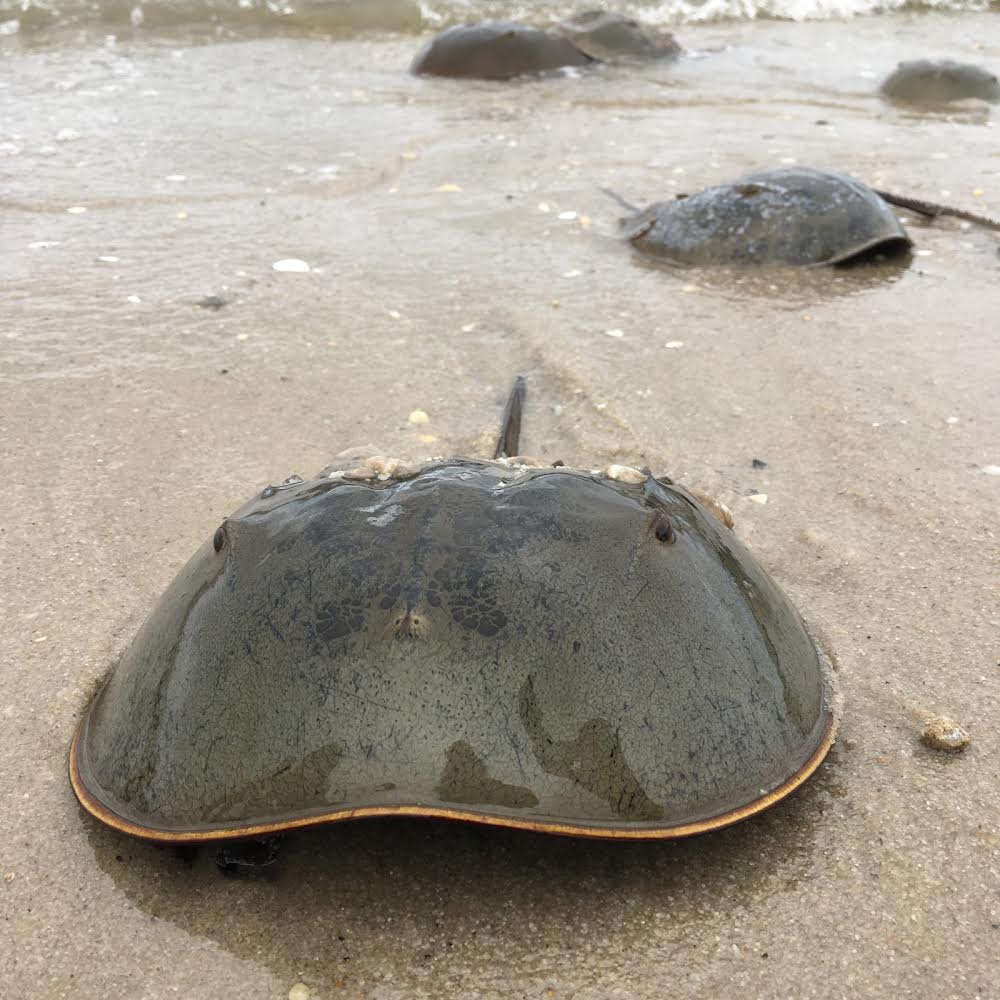Horseshoe Crab Spawning in New Jersey


The Atlantic Horseshoe Crab, also called by the scientific name Limulus polyphemus, are prehistoric animals that have been on Earth for millions of years. They are in the Phylum Arthropoda. The horseshoe crabs’ structure dates 245 million years ago in the Carboniferous Period and they are more closely related to spiders, ticks, and scorpions (Tanacredi, Bottom & Smith 2009). Horseshoe crabs live in brackish water and often journey to Delaware Bay to spawn and lay eggs. The horseshoe crabs choose areas like Delaware Bay because of the shallow intertidal areas. The peak spawning season for the Atlantic Horseshoe crab in New Jersey is from May to June. The horseshoe crabs come onto shore during high tide. The horseshoe crabs prefer to come ashore at sunset and into the night. The female and male horseshoe crabs will mate and then the female will lay the eggs on the beach. The water is moist from the changing tides, and this helps the eggs develop. Once the horseshoe crabs are ashore the male horseshoe crabs will surround the female and secrete sperm into the water. The males will also hitch a ride on the female horseshoe crabs by using their “punching bag claws” to grip the female and the female will go ashore with the male attached to her shell. This method has the most success because it has the highest likelihood of fertilization. The larger female horseshoe crab will dig into the sand and lay clusters of eggs. A female horseshoe crab can lay up to 4,000 eggs in a cluster and there are about 12,000 to 24,000 in a cycle, and they can mate up to four times. The horseshoe crab eggs will hatch in about two to four weeks after being laid, and hatching depends on the air temperature. Just like sea turtles the young horseshoe crabs will appear and swim away into the water column. Spawning season is not all joy: other female horseshoe crabs will dig up the nest and shore birds like the Red Knots will eat the eggs to fuel their long migrations (Hawk 2022). The horseshoe crabs choose areas like Delaware Bay because of the shallow intertidal areas and the horseshoe crabs do not like to climb step surfaces so these beaches are easy to access. The horseshoe crab eggs support shorebird populations and are important to the environment. People flock to the shores to see this event and to conduct surveys on horseshoe crab populations and health. Those who conduct surveys or just wanted to check out this wonderful phenomenon must be careful not to harm the horseshoe crabs, trample any crab or bird nest, and respect the wildlife. People should not disrupt mating horseshoe crabs or feeding shore birds. If a horseshoe crab is flipped over on its back, you can flip it over by holding its shell, and absolutely by no circumstance should you lift a horseshoe crab by the tail. Horseshoe crab spawning can be observed on any beach in New Jersey along the Delaware Bay.


-Mackenzie Briggs, Intern at Cape May Whale Watch and Research Center
Stockton University ’24
Sources:
Tanacredi T. J, Botton L. M & Smith R. D. (2009). Biology and Conservation of Horseshoe Crabs. Springer Science and Business Media. 5-662. Biology-and-Conservation-of-
Hawk, T. (2022). Give a Horseshoe Crab a Hand. NJ.com. https://www.nj.com/cape-may-
Where and When to see Horseshoe Crab Spawning. (2021). Return the Favor New Jersey. https://returnthefavornj.org/
